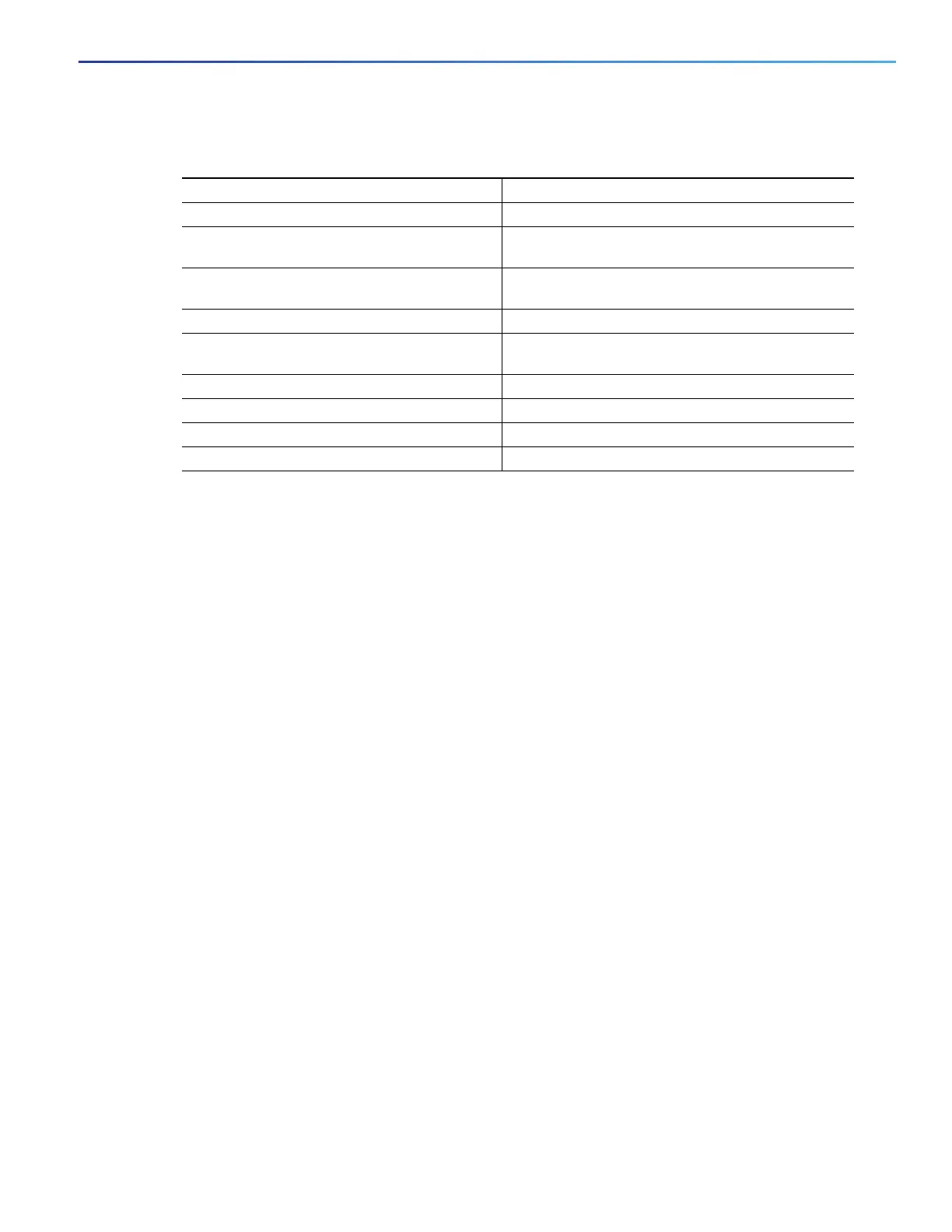823
Configuring IP Unicast Routing
Configuring OSPF
DETAILED STEPS
To disable IP summarization, use the no ip summary-address rip router configuration command.
EXAMPLE
In this example, the major net is 10.0.0.0. The summary address 10.2.0.0 overrides the autosummary address of 10.0.0.0
so that 10.2.0.0 is advertised out interface Gigabit Ethernet port 2, and 10.0.0.0 is not advertised.
Switch(config)# router rip
Switch(config-router)# interface gi0/2
Switch(config-if)# no switchport
Switch(config-if)# ip address 10.1.5.1 255.255.255.0
Switch(config-if)# ip summary-address rip 10.2.0.0 255.255.0.0
Switch(config-if)# no ip split-horizon
Switch(config-if)# exit
Switch(config)# router rip
Switch(config-router)# network 10.0.0.0
Switch(config-router)# neighbor 2.2.2.2 peer-group mygroup
Switch(config-router)# end
Configuring OSPF
Open Shortest Path First (OSPF) is an Interior Gateway Protocol (IGP) designed expressly for IP networks, supporting IP
subnetting and tagging of externally derived routing information. OSPF also allows packet authentication and uses IP
multicast when sending and receiving packets.
This section briefly describes how to configure OSPF. For a complete description of the OSPF commands, see the OSPF
documents listed in the Related Documents, page 924.
Note: OSPF classifies different media into broadcast, nonbroadcast multiaccess (NBMA), or point-to-point networks.
Broadcast and nonbroadcast networks can also be configured as point-to-multipoint networks. The switch supports all
these network types.
The Cisco implementation conforms to the OSPF Version 2 specifications with these key features:
Definition of stub areas is supported.
Command Purpose
1. configure terminal Enter global configuration mode.
2. interface interface-id Enter interface configuration mode, and specify the
Layer 3 interface to configure.
3. no shutdown Enable the interface if necessary. By default, UNIs
and ENIs are disabled and NNIs are enabled.
4. ip address ip-address subnet-mask Configure the IP address and IP subnet.
5. ip summary-address rip ip address
ip-network mask
Configure the IP address to be summarized and the
IP network mask.
6. no ip split horizon Disable split horizon on the interface.
7. end Return to privileged EXEC mode.
8. show ip interface interface-id Verify your entries.
9. copy running-config startup-config (Optional) Save your entries in the configuration file.

